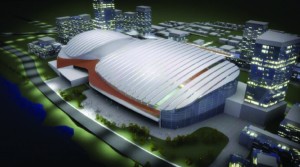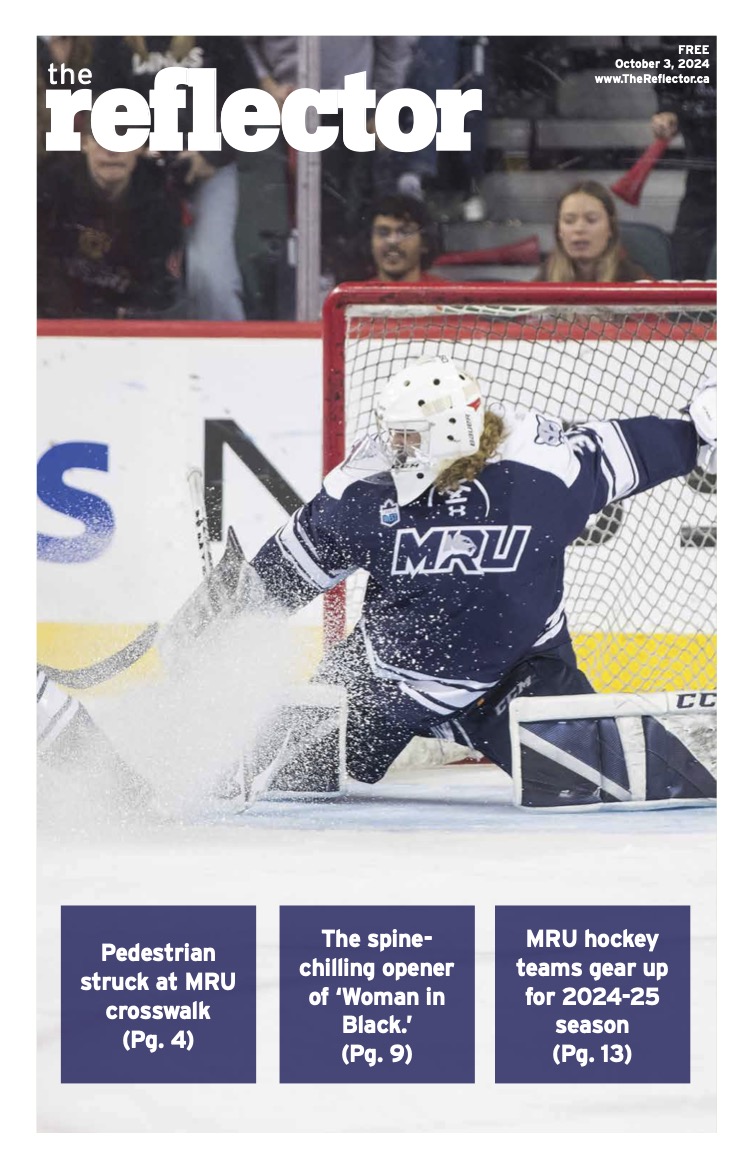CalgaryNEXT: the highly anticipated new home of the Calgary Flames
When news of a modern Calgary Flames/Stampeders facility broke out, the city started buzzing. That buzz only grew louder after the official announcement.
Neil Hilts
Contributor

algaryNEXT has been a hot topic around the city. Which side do you favour with?
Photo courtesy of Facebook
On Aug. 18, Ken King, president and CEO of Calgary Sports and Entertainment Corporation, released his team’s plans of CalgaryNEXT, a transformative arena project to be constructed in the West Village.
The $890-million facility was met by two strongly opinionated and highly divided camps: those opposing the high costs and funding required by the city, and the supporters who just want to see the place built.
Construction is still a few years away, and completion of the project won’t happen for at least five years, but with the proposal, things are officially underway. This also means the debates have only just begun.
One video making the rounds has been comedian John Oliver’s take on super stadiums, which was produced in mid-July. It’s probably swayed more people to the opposition side.
Within two days of the plan being released, the coverage was not only Calgary-wide, but featured in many national news outlets. Again, there were supportive articles and others that raised questions. While some had a balance, this one will outline arguments for both sides.
First off, you may not understand how the funding breaks down, which is the sticking point for many.
The Flames have agreed to pay $200 million, which is quite the commitment, as most private groups rely on municipal funding. This still leaves $690 million, but there’s a plan for that.
A $250 million ticket tax will be put in place. This would mean a portion of ticket sales (allegedly less than 10 per cent) would go towards financing. However, the city says they want the Flames to pay for this upfront, while the Flames might expect the city to pay this first, since the ticket tax might not go into affect until the stadium opens.
Since the city has already called for plans to build a field house, the city is directly on the hook for $200 million, which is a very fair proposal.
The last $240 million is more interesting. It comes from the Community Revitalization Levy (CRL), a loan from the province that is then repaid by the city through property taxes on the area. Since King views West Village as a major development spot for housing, offices and more, this would easily make the money back.
Land remediation is also needed, since the West Village is contaminated with creosote, something that’s been a problem for more than 60 years, and this will help put an end to it. However, neither the Flames nor the city are ready to foot the bill.
Parking has also come into question, as there will be fewer spots available than currently available at the Saddledome, but King stresses the nearby Sunalta LRT station will ease everything.
Looking at the development side of things, with the new facility in place, the West Village will become a hub. Calgary is a city that lacks density among residents, and this area could be a prime focus for high-rises.
Coupled with the trendy East Village, which is nearing completion, the downtown core of Calgary will be a hotspot and more of a draw to residents and tourists.
With flashier new arenas constantly sprouting up, the appeal for players to go to certain markets based on their home ice is becoming quite prominent. Free agents can make or break teams, and having a state-of-the-art home is a big part of catching their attention.
Regardless of which side you sit on, this is huge news and will dramatically change the city.


